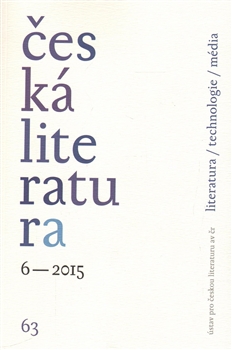Povaha písma, jeho meze a nosiče
The nature of typeface, its limits and media
Excerpts and notes on historical aspects of the media dimension of writing and literary communication
Author(s): Tomáš GlancSubject(s): Language and Literature Studies, Studies of Literature, Czech Literature
Published by: AV ČR - Akademie věd České republiky - Ústav pro českou literaturu
Keywords: medium; typeface; electronic text; hypertext; materiality; cultural technology; samizdat; ergodicity; semiotics; paper; visual poetry; experimental poetry
Summary/Abstract: This article examines literature from the standpoint of mediality, defining medium as an act, i.e. “an apparatus brought into operation”. A new sensitivity towards the media dimension of literary communication, bolstered by new technologies, applies to typeface and writing itself, the media of the work and communication — the treatment of the work as a physical phenomenon. The media dimension of writing is not just conceived as a phenomenon bound to digital data or the internet, but as an age-old element in the treatment of texts and associated both with the meanings of texts and the authority mediated by texts. From these standpoints samizdat also appears to be a noteworthy phenomenon which creates a particular materiality for writing, along with various forms of experimental treatment of typeface, writing and text. One productive tool here appears to be Aarseth’s ergodicity, a term applied to an attribute of a work that involves or creates rules on which its non-linear “usage” is based. On the basis of a number of specific cases it is shown what media-“staged” and variously produced (cf. Kittler) text might be like, and what uncertainties apply to it. From this standpoint avant-garde experiments confront questions raised by theologians, mystics and glossolalia theorists.
Journal: Česká literatura
- Issue Year: 63/2015
- Issue No: 6
- Page Range: 835-859
- Page Count: 25
- Language: Czech

